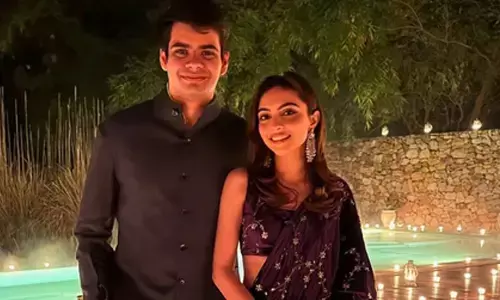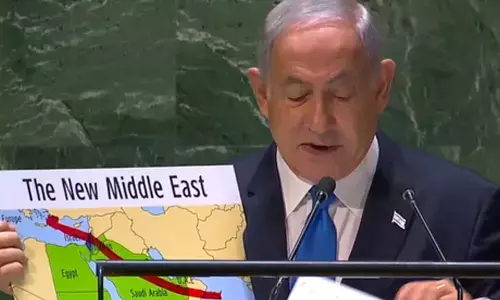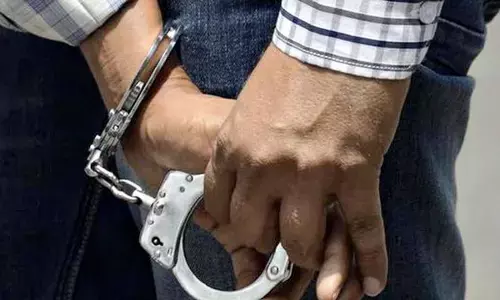The making of a guilt-free nation
 The making of a guilt-free nation
The making of a guilt-free nationThe 1980s are considered the golden age of Indian television which brought to us not just the best of Indian literature, epics, culture and the arts, but the best of our regional cinema through Doordarshan. With the spread of commercial television channels now both for news and general entertainment, a relentless diet of crassness is fed to families around the country.
Culturally, in Indian families, we do not instil pro-social values, respect for others' rights and decency among our children. The constant evidence of this is not far to seek. A queue in a bank, a bus-stop, or the traffic on our roads are enough to show us the utter unconcern for those around us in our anxiety to get ahead. Any mild resistance or restraint on this self-centredness that is entrenched in people can quickly turn into a violent encounter.
A few years back we did a study on violent content on prime-time Telugu television serials using Murray, Cole and Fedler's 1970 study on television violence and teenagers. The researchers found that teenagers' definitions of violence generally involved three types of acts: (1) Physical: violence to persons, damage to property (2) mental: psychological and emotional (eg. fear and hatred), and (3) Verbal: verbal· abuse. It was a revelation to find that several prime-time serials contained almost 60 per cent or more of violent content per episode, amplifying physical, mental and verbal violence dramatically.
The serials seldom developed a character that embodied decency, generosity or empathy, that could have been a positive role model for the viewers. While the serials peddle fiction, the news media deal in reality. Much of the violence we see around us manifests in many forms and is showcased on news media. Corruption is a form of violence. The complete absence of moral core in politics is a form of cultural violence that corrodes the social fabric. The apparent success of individuals indulging in it creates a pervasive ground for emulation.
We see murderers, lynchers, the corrupt from the corporate sector, all converging at the political cusp to abet and mutually reinforce the process of undermining democracy. It inevitably infects the executive, the law and order machinery, and the judiciary. Why are we surprised when the police fabricate, set-up cases against the innocent, and the judiciary allow it to pass muster?
Anyone who has access to power, who can get a criminal acquitted and a dissenter convicted, is admired and emulated in our country today. People flock to such men and women, (mis)reading their criminality as some divine power. It is often the media that celebrate, for money or for clout, such 'leaders' and make them acceptable to the public.
Tony Joseph, the well-known writer/journalist, tweeted, "the amorality of the Indian media is perhaps rivalled only by that of the mafia. There is a certain respect for violence; an admiration of ruthlessness; a cravenness in front of criminality; a shy regard for crudity; an affinity for bombast; & a readiness for self-abasement."
Looking at the month-long coverage of the election process that is underway, one sees that there are many candidates who are singers, writers, activists and people of extraordinary achievements, who are in the fray. But it is the abusive, the crude, the corrupt, those who can make outrageous comments, deliver dog-whistles of violence against their rivals, who get the immediate attention of the media.
By repeating such content, the media amplifies and gives it greater spread, from a local context to national debate, where again the apologists are given ample time to justify criminal behaviour.
Any publicity is good publicity in most contexts. It first gives the protagonist instant recognition. Appearing on the media is often read as an index of power. This has spawned spurious strategies of buying one's way into the newspapers and television screens.
We have heard of advertising, paid news and in the last two general elections, wide spread use of social media by well-organised mercenary troll armies. News releases are accompanied by 'token amounts' for the reporters/stringers, if one wishes to see it published. Most news is now publicity as it is paid for. It is not surprising that those flush with cash also occupy much space on media. These interventions have normalised and sometimes celebrated those who peddle political and communal violence.
If on media one can buy space for justifying or celebrating criminality, it should not surprise us to see a society that is guilt-free when it indulges in extreme abuse of its own people. The insensitivity and brutalisation also spreads to the consumers of such news. The vox pop bites on a range of issues clearly indicate how the person on the street is attuned to vigilantism each time they demand summary hanging and instant justice without due process of law.
We see assertions of 'right to kill', 'right to abuse', and the 'right to intimidate' as negotiable in a civilised society governed by Constitutional values, and worthy of debate. Earlier, these were matters for criminal prosecution. The obverse of this 'free and fair debate' is the criminalisation of rights discourse.
Instead of rational debate on issues, media shape a lawless society that is unconcerned about the rights of the people. Sections of media label rights activists as lawless people, even as they celebrate powerful criminal elements. Such media lay the foundations for anarchy, not rule of law.














